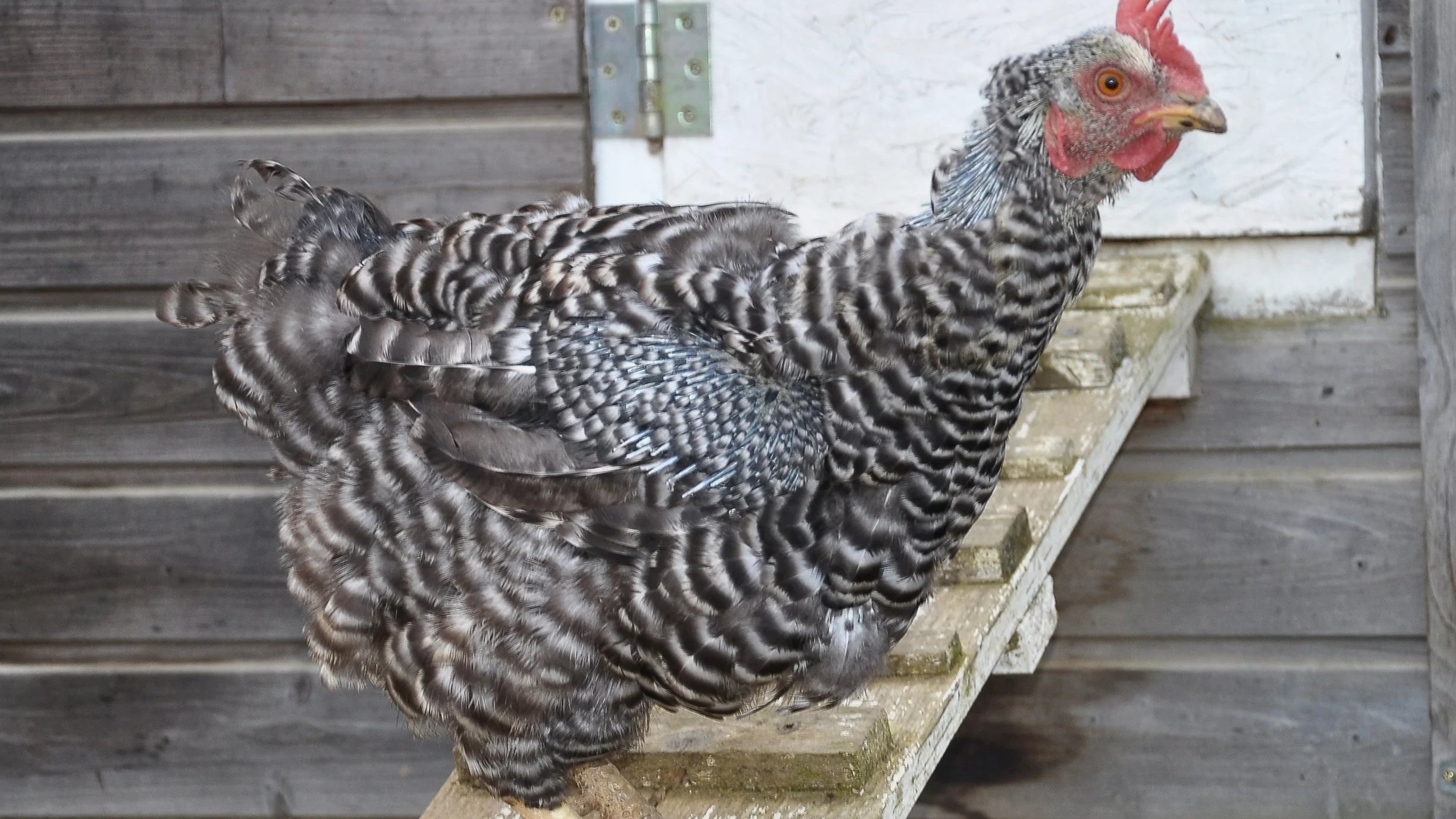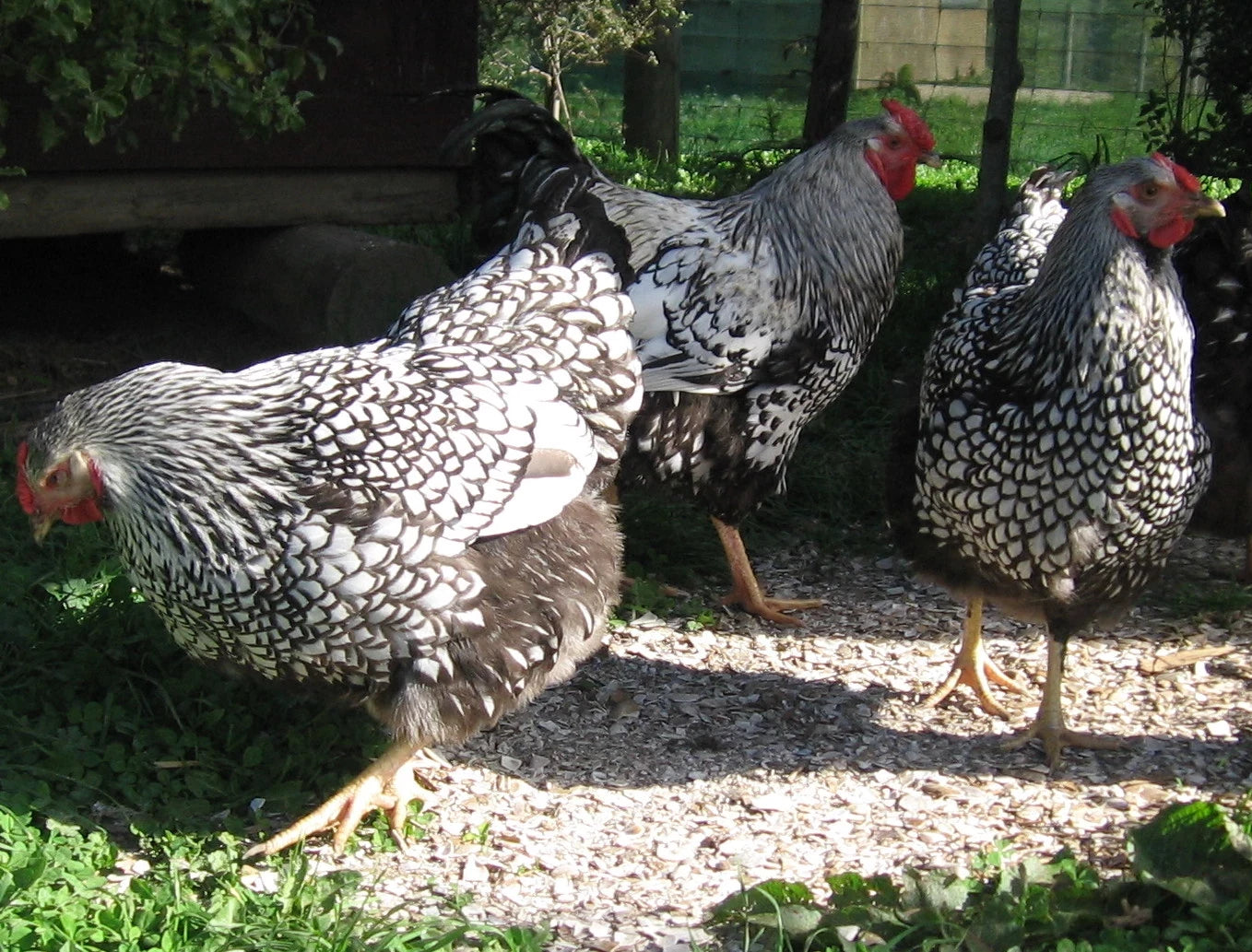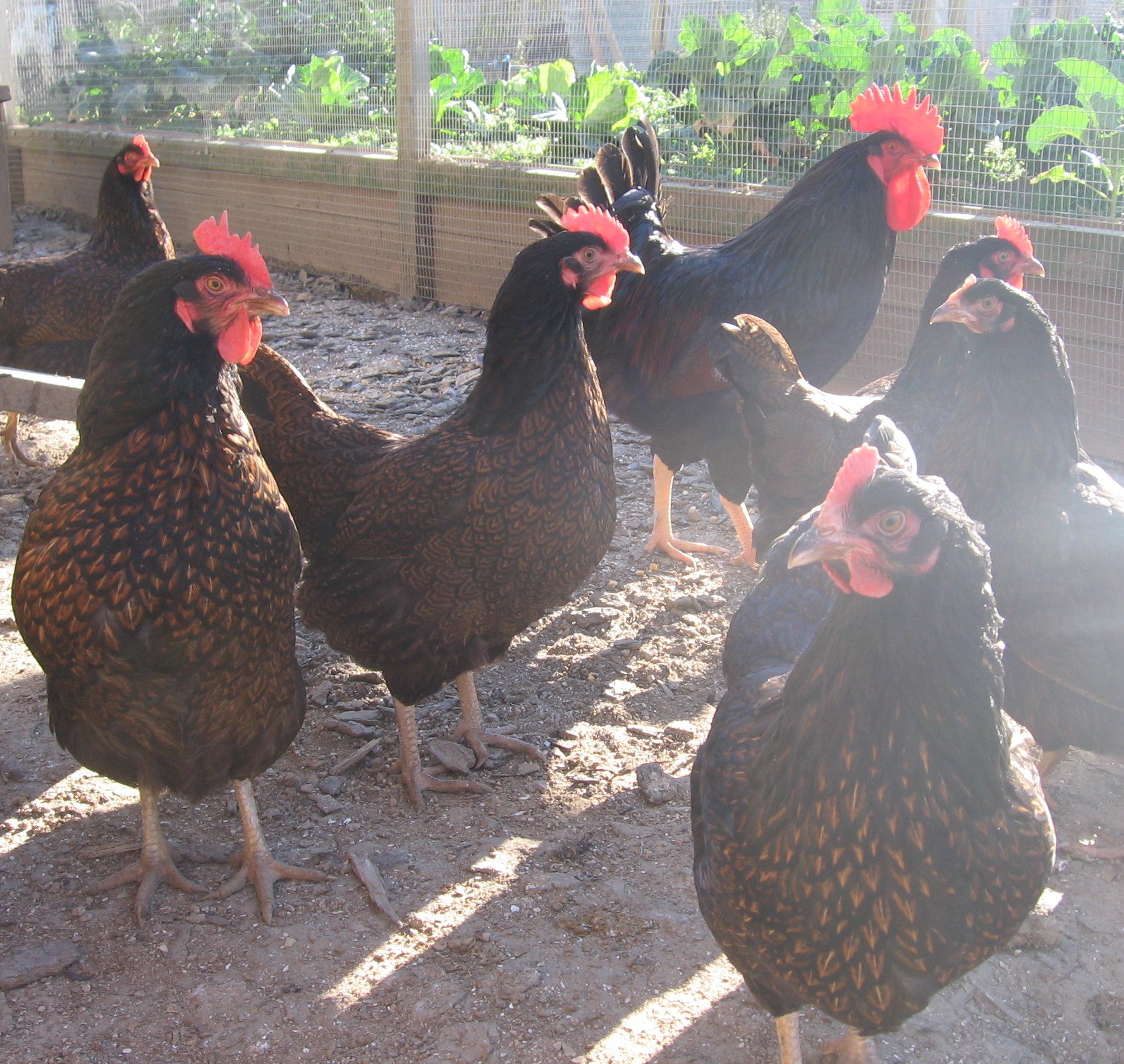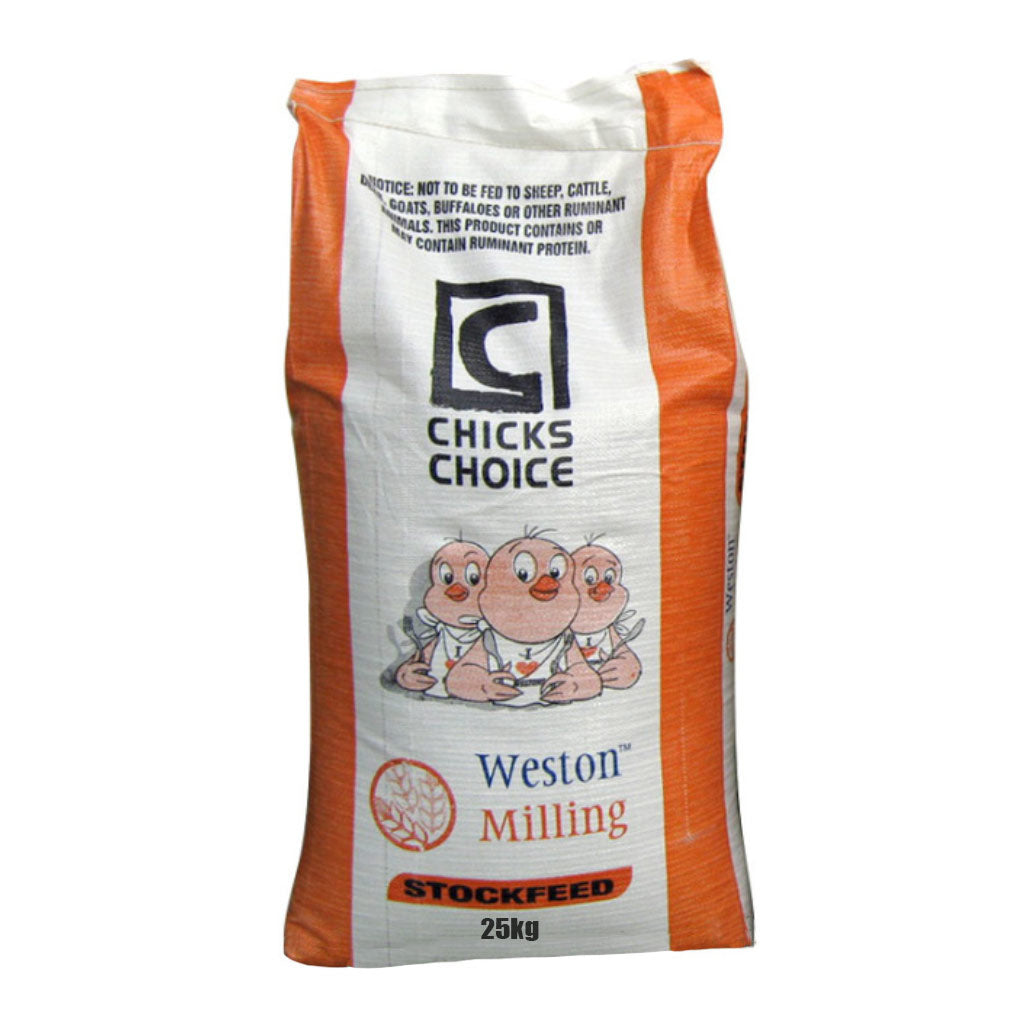Top Layers Need Balanced Feed 🐔
Updated Friday 19th May 2023, First published March 28th, 2013
Not all Chicken Feed is the Same!
At Appletons we feed our fowl (all year round!) on a nutritionally balanced, complete commercial feed which contain animal based proteins. Domestic chickens are not vegetarians (contrary to belief) they are omnivores; they eat both animals and vegetables. Their ancestors, the Gallus Gallus, or red jungle fowl, spent its days foraging in the native jungles of Asia and India scratching through the leaf litter, consuming a diet mainly of insects, worms and invertebrates and topped up on fruits, berries, nuts, seeds and young leaves. More recent studies of the crops of wild jungle fowl which have been dissected and analysed, reveal more than half of their crop is made up of animal/insect contents. Animal proteins and vegetable proteins are very different and get utilised differently by chickens. All proteins are made up of building blocks called amino acids and different proteins have different amino acids. Chickens use both vegetable and animal proteins, but in order to function correctly, they specifically need animal proteins as they contain amino acids like methionine and lysine - which are essential to a chicken’s health. Most commercial feed manufactured today use only plant based proteins (due to cost) which is sourced entirely from vegetables like soya meal and peas. Vegetable based proteins have low levels of the essential amino acids like lysine and methionine, which if not substituted synthetically, will cause problems such as poor feathering, faulty eggs and low egg production. These plant based feeds are often supplemented with synthetically manufactured methionine and lysine so they can be labelled a 'complete' feed.
Sourcing a commercial feed with naturally occurring lysine and methionine found only in animal proteins will go a long way to having healthy, good layers or introducing animal based proteins into your chooks diet will make all the difference too.

Feathers are Protein
Late summer, early autumn is when hens generally begin their annual moult. Egg numbers start to decline or might have even ceased. With the shortening of daylight hours the chicken’s natural cycle recognizes that winter is approaching so she needs to stop laying to build up her reserves for spring. This is a perfectly natural thing to do. Most hens (especially the heritage girls) will spend nine months of the year laying and three months shedding and replacing their feathers. There are good reasons for this because, in the wild, the reduced daylight, a general lack of food and cold weather are not suitable conditions for breeding. During the moult she will be growing a new coat of feathers and building up the calcium reserves she has depleted in her bones over the past laying season. Some hens do it gracefully whilst others opt for the sudden moult and look like ‘plucked chickens’ ready for the pot! Both activities (laying and moulting) require large amounts of protein. Laying nutritious eggs and making new feathers requires plenty of protein all year round. Not only do our hens need the right type of protein but they also need a nutritionally well balanced diet. The ratio of protein to fibre to fat to salt to essential minerals and vitamins needs to be in the correct amounts for optimum health and egg production.
The Importance of Proteins during the Moult
Why do poultry need extra amino acids?
Chicken feathers are about 85% protein, so chickens need extra protein in their diet during this time to support healthy feather regrowth. Because amino acids are the building blocks of proteins, it is important to ensure your birds receive the right amino acids in their feed.


The Right Type of Protein
Many backyard poultry keepers believe that chooks can live and lay happily on wheat; kitchen scraps and a little daily access to free range. This diet is woefully deficient in protein and fat and often too high in carbohydrates and fibre. So if you are feeding out mainly wheat or maize to your beloved chooks think again. They are not laying an egg made up of carbohydrates! Eggs are essentially ‘protein’ wrapped in calcium so a chook needs to consume good quality animal proteins to achieve good egg output. The average daily layer needs a minimum of 16 grams of crude protein to produce so look for a premium layer feed that contains 16% to 18% crude protein. Wheat and maize are high energy snacks and low in protein and best feed out as afternoon treats. A diet where mainly vegetable protein is supplied will lead to deficiencies causing behavioural and performance problems. Free range is also a very general term and used widely to describe ‘time out of the main chook pen’. Free range areas can vary from small urban backyards to large grassy paddocks…but either option is not really ideal for our chooks in pursuit of adequate quantities of animal protein. Earthworms and bugs do not replenish overnight and the habitat of your suburban garden or open grassy paddock is not really the ideal ‘under canopy leaf litter paradise’ of protein-rich worms and invertebrates.
Avian nutritionists have spent decades researching and trialling poultry feed. Man has come a long way from the days when our grandparents threw grains and kitchen scraps out on the ground to their backyard fowl. Only last century man designed and bred the ultimate laying machine and the fast growing broiler chicken and to perform these birds require the necessary fuel that is going to give optimum results. With over 70 years of dedicated research we now have available to all poultry keepers the modern and easy way to Heritage chickens enjoying some free rangekeep our girls happy and contentment: commercial poultry feed.
Check The Label
One single sack of complete layer feed will meet all the nutritional demands of your productive hens…and in this crazy, convenience world we live in what a blessing to be able to buy a sack of feed that is going to save us time and do a good job! A hen that is designed to lay 300+ eggs a year needs to be on good quality tukka! … just like our expectant mothers and our growing kiwi kids!... so it is ultra-important to look at the label when deciding what to buy! It needs to be the right one! All bags of feed should have a label showing ingredients and a breakdown (analysis) of protein to fat to fibre etc.
Check what the crude protein levels are and what ‘type’ of protein it is. You might be surprised to find that some of the feeds out there have lower levels of crude protein in them and many are all vegetable based. Cheap feed with the lower levels of crude protein, especially vegetable based proteins, will not give your hens what they need to be top producers. Feed should also be labelled complete or incomplete as some feeds are only supplement feeds and need to be feed out in conjunction with other feed. Sometimes that elusive word ‘free range’ is used to describe the type of feed …often this feed is low in protein and expects your hens to get their protein top up elsewhere and not from within the bag! So next time you go to buy your chook feed stop for a moment, turn the bag over, read the label and ask “Am I feeding my chooks the right stuff!”

It is a false economy to think that buying cheap feed, or just feeding out kitchen scraps or grains or leaving your chooks to forage will be sufficient to provide you with lots of lovely fresh protein-rich eggs. Feeding your chooks a quality, nutritionally balanced poultry feed all year round is essential so they can be well feathered, top producing layers!

Stop feeding the sparrows, rats and mice and keep your chicken feed clean 😊
Invest in a quality automatic chicken feeder today.





Remember, Chickens are Omnivores!
Feeding animal based proteins (these naturally contain methionine and lysine) is essential for good body and feather growth and egg production in your poultry. All round your chooks will benefit. Either look for a commercial feed that contains the animal based proteins or supplement their diet in the correct ratios with different types of protein options.
Garden snails and slugs
Best served cooked to your chooks as the available levels of protein, lysine and methionine are higher. Feed out at a ratio of 15% of the bird’s daily diet so it makes a good protein treat if you fancy preparing ‘Chook Escargot’ for your feathered friends!
Earthworms
Both the common NZ earthworm and tiger worms are excellent sources of protein, methionine and lysine for poultry. They are slightly more nutritious for chicken feed than fishmeal or meat. Start your worm farm today using your kitchen waste to harvest protein-rich tiger worms.
Fishmeal (white fish)
Fishmeal is sometimes used in commercial poultry feed (especially organic commercial feeds where blood and meat meal is classified as an animal by product and not allowed) to make up the protein component but it is expensive, difficult to source and hard to store. Some chooks do not like it and some folk say it taints the meat and eggs with a ‘fishy’ flavour. We believe if chooks were meant to eat fish they would be coastal and designed to be waders!
Meat and bone meal
This meal contains bones, meat trimmings and organs that are cooked. Blood and bone meal has blood added and is also cooked and has higher lysine levels of 7% but slightly lower methionine (0.6%) Sometimes added to commercial feeds and labelled as ‘contains ruminant protein’. We recommend feed that contains ruminant protein over the ones that contain just the vegetable based proteins as they naturally contain lysine and methionine.
Black soldier fly larvae
These can be grown for your chickens as a good source of protein. Soldier fly will do a fantastic job of composting your kitchen waste and reducing its volume by 95%. The result is lots of high-protein larva which can be feed to your chooks. No rotten smells or maggots if you have the time and inclination it is a good protein option.
Mealworms
Mealworms are too high in fat and protein and too low in methionine to be fed out as a main feed ingredient but make a perfect scratch treat. Growing your own in containers is the best way. There are a few easy steps involved but once you have got the hang of it your chooks will have a constant yummy supply of protein-rich mealworms.
Milk and milk by products
For those of us that have a house cow or are milking thousands of cows any surplus milk products can go to the chooks. When we were milking our house cow we used to let the surplus milk curdle overnight on the kitchen bench add any leftover bread crusts and feed it out our chooks. Not a drop was wasted! Milk can be feed out as a liquid (ours did well on fresh, unpasteurized milk) as it is also a good probiotic for good gut heath. Milk products are a very valuable source of not only protein but also vitamins, lactose and minerals.

A Point to Ponder
Synthetic methionine in commercial feed... Is it safe?
DL-methionine (the synthetic version) is so common in chicken feed that organic chicken producers are having a hard time finding a natural replacement.
Adding synthetic methionine is cheaper than adding natural protein. (animal based proteins) This is why modern chicken feedstuffs rely on it. In other words, it's purely about industrial scale production. When it comes to feeding the home flock, or for that matter feeding our children, we must either trust that science is on top of these questions, or, looking at the increasing prevalence of modern mystery syndromes, suspect that we've been playing a long-term guessing game.
All the more reason to go back to the dual purpose heritage breeds and aim for a more natural diet. After all, wild chickens don't base their entire diet on a couple of staples like wheat and soy. And in the 'olden days' (pre-1950s) chickens got by quite well on non-synthetic diets because they included milk and milk by products as well as other animal based proteins that contain natural methionine.

Weston Peak Layer and Free Range Layer are premium, nutritionally complete layer feeds containing high levels of naturally occurring crude proteins. These proteins are the right type of proteins to grow good, healthy birds. Look for the words:
blood, meat and bone meal on the label.

High protein treats like Topflite Mealworms will be very beneficial to your hens. They contain 50% protein and your chooks will devour them. Protein grows feathers and keeps your hen in peak laying condition.
Mealworms
Grow your chicks well on a complete feed like Weston Chicks Choice. This is a textured crumble with a crude protein content around 20%. Again these are naturally occurring animal proteins (blood, meat and bone meal). We keep our youngsters on Chicks Choice right up to Point of Lay.
Chicks Choice
Topflite Insect Medley is another high protein natural snack that your chooks will love. They will benefit from the extra protein and lay well for you.
Insect Medley